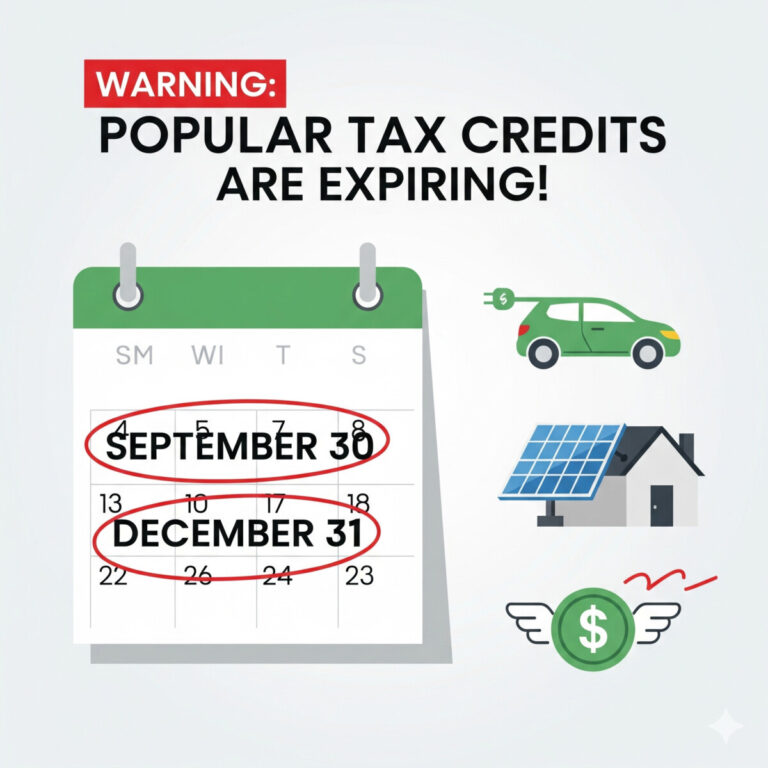IRS “Safe Harbor” Unlocks Crypto ETF Staking: What Investors Need to Know
Ever looked at your crypto ETF and wished it could… you know, do more? Beyond just sitting there tracking a price? Maybe you’ve seen people earning “staking” rewards on their own crypto and wondered, “Why can’t my ETF do that for me?”
If you’re an investor in the world of crypto ETFs, listen up. The IRS just made a move that could seriously change the game for your investments. We’re talking about a new rule that could finally turn your ETF into a source of stable, regular income. This is a big deal, and it’s all thanks to a new “safe harbor” that solves one of the biggest tax headaches in the industry. Let’s break down exactly what’s happening. 😊
The Big Headache: Crypto’s “Double Taxation” Problem TAX
So, why hasn’t your ETF been offering you staking rewards all along? The answer is simple: a giant, scary tax problem. Up until now, if an ETF wanted to stake its crypto (like Ethereum) to earn rewards for its investors, it was flying straight into a legal storm.
Here’s the conflict in a nutshell:
- What ETFs Want to Be: For tax purposes, an ETF wants to be seen as an “Investment Trust.” This is a simple, passive entity. Its only job is to hold an asset. This structure is great because it has a single layer of tax—you, the investor, pay tax on your gains or payouts, but the fund itself doesn’t.
- What Staking Looks Like: The act of “staking” (locking up crypto to help run the network and earning rewards for it) looks a lot more like a “Business Entity.” It’s an active, profit-seeking operation.
This created a nightmare scenario. The big fear was that the IRS would look at a staking ETF and say, “Nope, you’re not a simple trust, you’re a business.”
And if that happened? Double taxation.
Imagine this:
- First, the ETF earns $100 in staking rewards. The IRS, treating it as a “business,” takes a cut (corporate tax). Let’s say $21 leaves.
- Now, the ETF passes the remaining $79 on to you. The IRS then turns to you and says, “That’s income!” and taxes you on that $79.
The IRS Greenlights Staking: What is This “Safe Harbor”? 🛡️
This is where the new rule swoops in to save the day. The IRS has finally provided a clear rulebook, officially creating what’s known as a “safe harbor.”
You can think of it like a pre-approved, safe flight path from the IRS. As long as the ETF follows this path exactly, the IRS guarantees it won’t be re-classified as a “business” and won’t get hit with that terrifying double taxation.
In legal and tax terms, a “safe harbor” is a set of guidelines that, if followed precisely, protect a person or entity from a negative legal or tax outcome. It removes uncertainty and provides a clear path for compliance. In this case, it’s the IRS saying, “Do these 5 things, and we promise not to treat you like a business.”
So, what’s in this new rulebook? The safe harbor sets out several key requirements, all focused on investor protection and clarity:
- Must Be Regulated: The ETF must be the real deal—SEC-regulated and publicly traded.
- Single Asset Only: The fund can only hold cash and one type of crypto (e.g., only Ethereum, not a mix). This rule is for single-asset ETFs, at least for now.
- Must Protect from “Slashing”: This is a huge one. The ETF, not the investor, must bear the risk of “slashing” penalties (when a validator makes a mistake and loses some of the staked coins).
- Must Keep a Cash Reserve: The fund must hold a cash reserve to ensure it can always provide liquidity for investors who want to cash out.
- Must Pay Out Rewards: The ETF can’t just hoard the rewards. It’s forbidden from chasing risky, high-yield strategies and *must* pay out the rewards to investors at least every quarter.
The Upside: What’s In It for You, the Investor? 📈
Okay, so the IRS created a bunch of rules. What does this actually mean for your wallet? This is where it gets exciting. This new rule unlocks three massive wins for you as an investor.
- 1. Tax Certainty
First and foremost, the double-taxation monster is gone (as long as the ETF is in the safe harbor). This single change removes the biggest barrier that was preventing fund providers from launching staking products. - 2. Serious Risk Protection
If you’ve ever tried to stake crypto on your own, you know it’s technical and risky. You have to pick a validator, trust them not to make a mistake, and pray you don’t get “slashed.” Under this new rule, the fund managers have to handle all that technical headache for you. The ETF must shield you from those slashing penalties and keep cash on hand so you can always sell your shares. - 3. The Big One: Stable Income 💰
This is the most exciting part for most people. For the first time ever, you’ll be able to buy a crypto ETF and expect to get a regular payout, almost like a stock dividend. The rule explicitly states the fund must pay out rewards at least four times a year. This completely changes the game, adding a whole new income-generating dimension to crypto investing.
The Price of Safety: Understanding the Limits and Trade-offs ⚖️
But, as with everything in life, nothing is perfect. All this safety, simplicity, and tax certainty comes at a price. This “safe harbor” comes with some very important limitations and trade-offs that you absolutely need to know about.
The fundamental choice is now between ETF Staking and Direct (DIY) Staking. One gives you simplicity and safety; the other gives you maximum control and potentially higher returns.
ETF Staking vs. Direct (DIY) Staking
| Feature | ETF Staking (New Rule) | Direct Staking (DIY) |
|---|---|---|
| Potential Yield | Lower / Conservative | Potentially Higher |
| Risk Level | Low / Managed (Fund absorbs slashing risk) | High / DIY (You absorb all risks) |
| Management | Passive / Simple (Just buy the ETF) | Active / Complex (Choose validators, manage keys) |
This new “safe harbor” isn’t a free-for-all. Here are the main trade-offs:
- Lower Potential Yield: The rule forbids ETFs from chasing “high-risk/DIY” yields. You’re getting a safer, more conservative (and likely lower) yield in exchange for peace of mind.
- Less Variety (For Now): This rule is for single-asset ETFs. If you were hoping for a “basket of staking coins” ETF, you’ll have to wait.
- No Auto-Compounding: This is a big one. The rule requires the ETF to pay the rewards out to you. It cannot automatically reinvest them for you. This is great for income, but it’s not ideal if your strategy is maximum long-term compound growth.
The Bottom Line: Is This a Game-Changer for You? 🤔
So, after all that, what’s the final verdict? Is this new IRS rule good news?
For investors, this measure is being seen as “very positive.” Why? Because it removes some of the biggest obstacles—the tax fears, the technical risks, the sheer complexity—right off the table.
Ultimately, what this rule does is create an entirely new category of crypto investment. It’s a product designed from the ground up to be safer, way more accessible for the average person, and one that prioritizes stability and income over trying to hit home runs with maximum returns.
The IRS has now drawn a very clear line in the sand, giving you, the investor, a real choice. Looking at your own strategy, what makes more sense? Do you go for the managed safety and stable income that these new ETFs will offer, or do you prefer the higher risk and potentially higher rewards of going it alone?
The choice is now yours.
Conclusion: Key Summary 📝
That was a lot of information! Here’s a quick recap of the most important points to remember:
- New IRS Rule: The IRS has created a “safe harbor” for crypto ETFs that use staking.
- No More Double Tax: This new rulebook allows ETFs to earn staking rewards and pass them to you without facing the dreaded “double taxation” problem.
- Huge Investor Wins: For you, this means three things: tax certainty, risk protection (the fund handles slashing risk), and stable income (rewards paid out at least 4x per year).
- The Big Trade-off: This is a product for safety and simplicity. In exchange, you’ll likely get a more conservative yield and you won’t be able to auto-compound your rewards within the fund.
- A New Choice: This opens the door for a whole new class of crypto investments, giving you the choice between managed safety (ETF) and high-risk/DIY staking.
Crypto ETFs That Pay You?
Frequently Asked Questions ❓
This is honestly one of the biggest structural updates to crypto investing in a while. It opens the door for a wave of new, income-focused products. But what do you think? Are you more excited about the stable income, or do you prefer the higher-risk, higher-reward of DIY staking? Let me know in the comments! 😊







